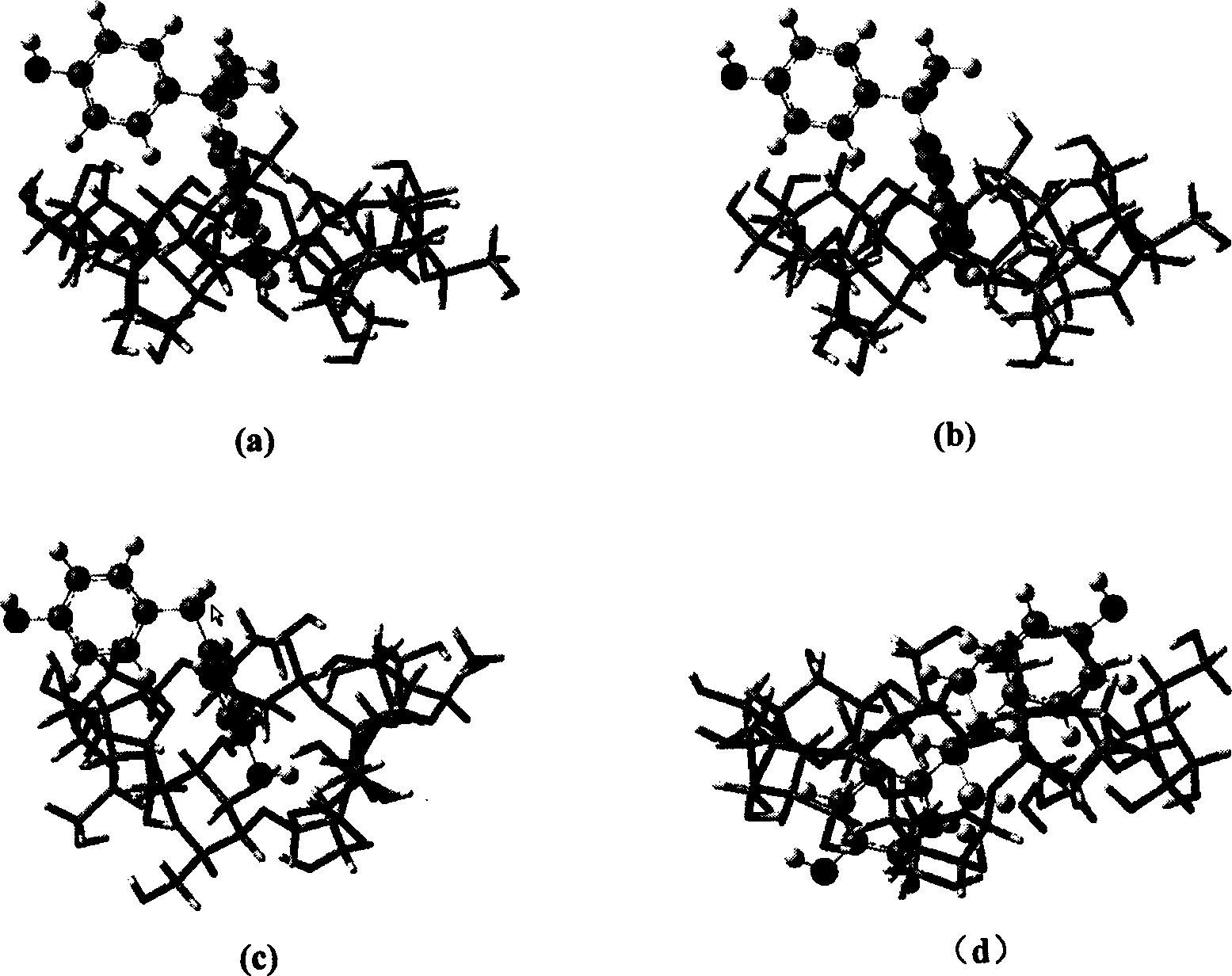Reinforcement treatment of bisphenol waste water
An enhanced treatment, bisphenol technology, applied in water/sewage treatment, chemical instruments and methods, light water/sewage treatment, etc., can solve the problems of long treatment time, transfer to another state, low degradation efficiency, etc. To achieve the effect of no secondary pollution
- Summary
- Abstract
- Description
- Claims
- Application Information
AI Technical Summary
Problems solved by technology
Method used
Image
Examples
Embodiment 1
[0011] Example 1: Add β-cyclodextrin to a simulated water sample containing 100 mg / L of bisphenol A (bisphenol A, BPA), the content of which is 500 mg / L, and the pH of the photoreaction solution is around 7.0. In 30 minutes, the photodegradation rate of bisphenol A after molecular recognition can be increased by 60%, and the reaction rate constant can be increased by 11.0 times.
Embodiment 2
[0012] Example 2: Add β-cyclodextrin to a simulated water sample containing 100 mg / L of bisphenol E (bisphenol E, BPE), the addition amount is 530 mg / L, the pH of the photoreaction solution is about 7.0, and the light is irradiated under ultraviolet light After 60 minutes, the photodegradation rate of bisphenol E after molecular recognition can be increased by 55%, and the reaction rate constant can be increased by 5.4 times.
Embodiment 3
[0013] Example 3: Add β-cyclodextrin to a simulated water sample containing 100 mg / L of bisphenol F (BPF), the addition amount is 570 mg / L, the pH of the photoreaction solution is around 7.0, and the light is irradiated under ultraviolet light In 60 minutes, the photodegradation efficiency of bisphenol F after molecular recognition can be increased by 40%, and the reaction rate constant can be increased by 2.3 times.
PUM
 Login to View More
Login to View More Abstract
Description
Claims
Application Information
 Login to View More
Login to View More - R&D
- Intellectual Property
- Life Sciences
- Materials
- Tech Scout
- Unparalleled Data Quality
- Higher Quality Content
- 60% Fewer Hallucinations
Browse by: Latest US Patents, China's latest patents, Technical Efficacy Thesaurus, Application Domain, Technology Topic, Popular Technical Reports.
© 2025 PatSnap. All rights reserved.Legal|Privacy policy|Modern Slavery Act Transparency Statement|Sitemap|About US| Contact US: help@patsnap.com

